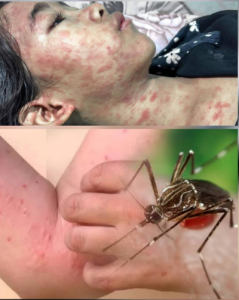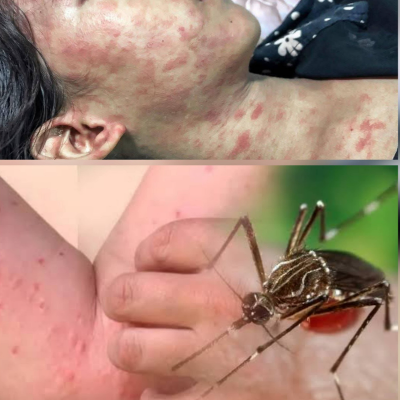The Mosquito’s Revenge: China’s Chikungunya Outbreak and the Fragility of Global Health
In the southern province of Guangdong, China, a silent invasion is underway. Not by armies or ideologies, but by mosquitoes — tiny, winged vectors of a virus that has already infected over 7,000 people and triggered a wave of public health alarm. The disease is chikungunya, a mosquito-borne illness known for its sudden onset and debilitating joint pain. And this outbreak, unfolding in the city of Foshan, is more than a local crisis. It’s a warning.
🦟 The Virus That Cripples
Chikungunya is not new. First identified in Tanzania in 1952, its name comes from the Makonde language, meaning “to become contorted,” a reference to the stooped posture of those suffering from its severe joint pain. Transmitted by the Aedes aegypti and Aedes albopictus mosquitoes — the same culprits behind dengue and Zika — the virus causes fever, rash, nausea, and most notably, joint pain so intense it can leave victims unable to walk or move normally for weeks or even months.
In Foshan, hospitals are filling with patients quarantined until they test negative. Streets are being sprayed with insecticide. Drones buzz overhead, releasing “elephant mosquitoes” — genetically modified predators designed to hunt and kill virus-carrying insects. Fish that feast on mosquito larvae have been introduced into stagnant water. It’s a full-scale biological counteroffensive.
But the enemy is persistent. And the conditions that allowed it to thrive are disturbingly familiar.
🌍 Climate, Urbanization, and the Perfect Storm
The Guangdong outbreak is not just a medical event — it’s an ecological consequence. Rising temperatures and altered rainfall patterns, driven by climate change, have expanded mosquito habitats northward. Urban sprawl, with its construction sites and poorly managed water storage, provides ideal breeding grounds.
This convergence of environmental degradation and human density creates a perfect storm. Mosquitoes multiply. Viruses spread. And cities become incubators for outbreaks that can leap borders with a single flight.
The World Health Organization’s Global Arbovirus Initiative has warned of this for years. Yet vaccine access remains limited. Two chikungunya vaccines exist, but none are available in Guangdong. The virus is moving faster than our response.
✈️ One Flight Away
The CDC has issued a Level 2 travel advisory for Guangdong, urging travelers to practice enhanced precautions. But the threat is not confined to China. Chikungunya has already spread to 16 countries this year, with over 240,000 cases and 90 deaths reported globally. Brazil alone accounts for more than 210,000 cases. And while the U.S. has not seen local transmission since 2019, imported cases from travelers remain a risk.
With millions of international passengers flying daily, the virus is just one bite — and one plane ride — away from new territory. The illusion of containment is fragile.
🧠 The Psychological Toll
Beyond the physical symptoms, chikungunya carries a psychological burden. The pain is relentless, often described as “bone-breaking.” Patients report insomnia, depression, and anxiety. The uncertainty of recovery — some take weeks, others months — adds to the mental strain.
In Foshan, reports have emerged of households refusing health checks, prompting authorities to cut electricity in non-compliant areas. Fear breeds resistance. Resistance breeds escalation. And the line between public health and personal autonomy begins to blur.
This echoes the early days of COVID-19 — the confusion, the mistrust, the desperate measures. But unlike COVID, chikungunya is not airborne. It’s carried by mosquitoes. And that makes it harder to track, harder to contain, and harder to explain.
🧬 Disease X and the Unknown Horizon
The outbreak has reignited fears of “Disease X” — the hypothetical pathogen that could trigger the next global pandemic. Chikungunya may not be that disease, but it fits the profile: rapid spread, painful symptoms, ecological roots, and limited treatment options.
Doctors warn that declining vaccination rates, climate change, and global travel are creating fertile ground for new epidemics. Measles, cholera, bird flu — all are resurging. And in the shadows, the unknown waits.
The lesson is clear: we are not prepared.
🧪 Science vs. Speed
China’s response has been swift. Insecticide-spraying drones, genetically modified mosquitoes, and quarantine protocols mirror the urgency of COVID-era tactics. But science moves slowly. Vaccine development, public education, and ecological reform take time. And viruses don’t wait.
The outbreak in Guangdong is a test — not just of medical infrastructure, but of political will, public trust, and global cooperation. It asks: Can we act before the next wave? Or will we always be one step behind?
🌐 A Global Mirror
What’s happening in China is not isolated. It’s a mirror reflecting the vulnerabilities of every nation. Urbanization without planning. Climate change without mitigation. Health systems without resilience.
The mosquito doesn’t care about borders. And neither does the virus.
This outbreak is a wake-up call — not just for China, but for the world.
💬 Final Reflection: The Fragility of Control
In the end, the story of chikungunya is not just about disease. It’s about perception. Control. Vulnerability. It reminds us that even in the age of AI, drones, and genetic engineering, a tiny insect can still bring a city to its knees.
And perhaps that’s the most humbling truth of all.


